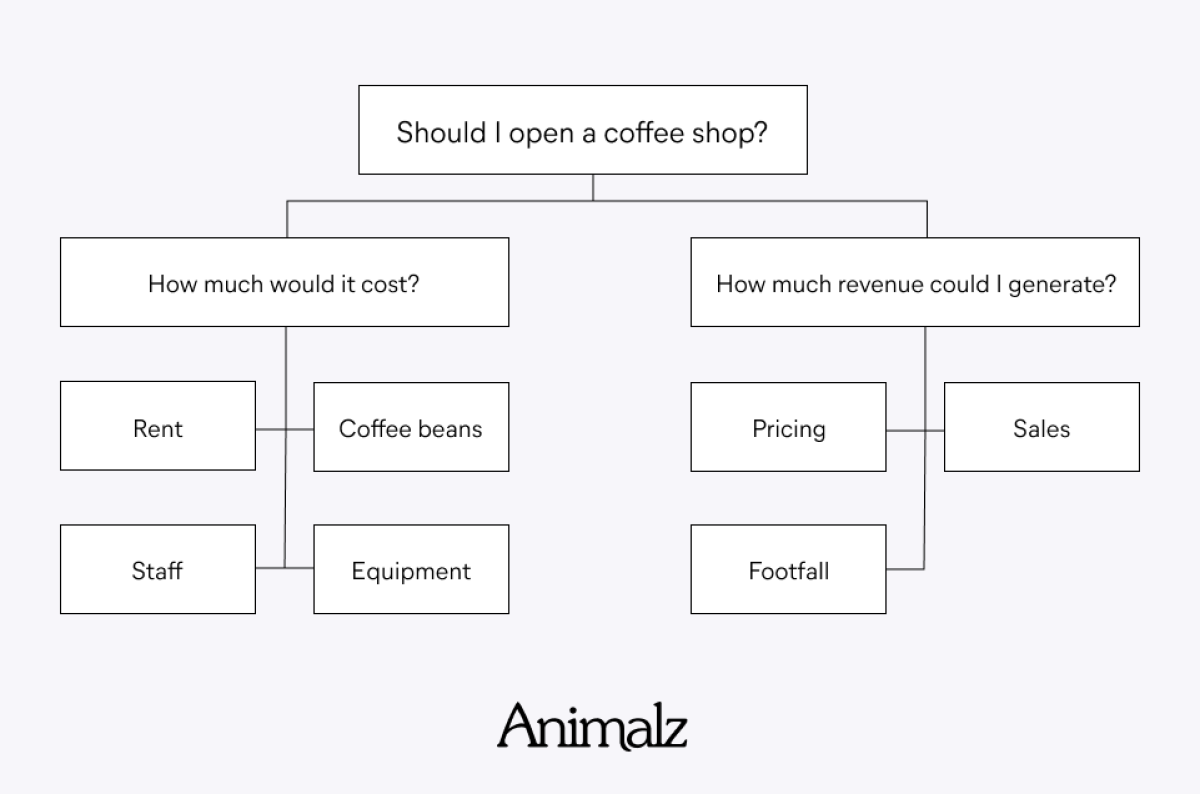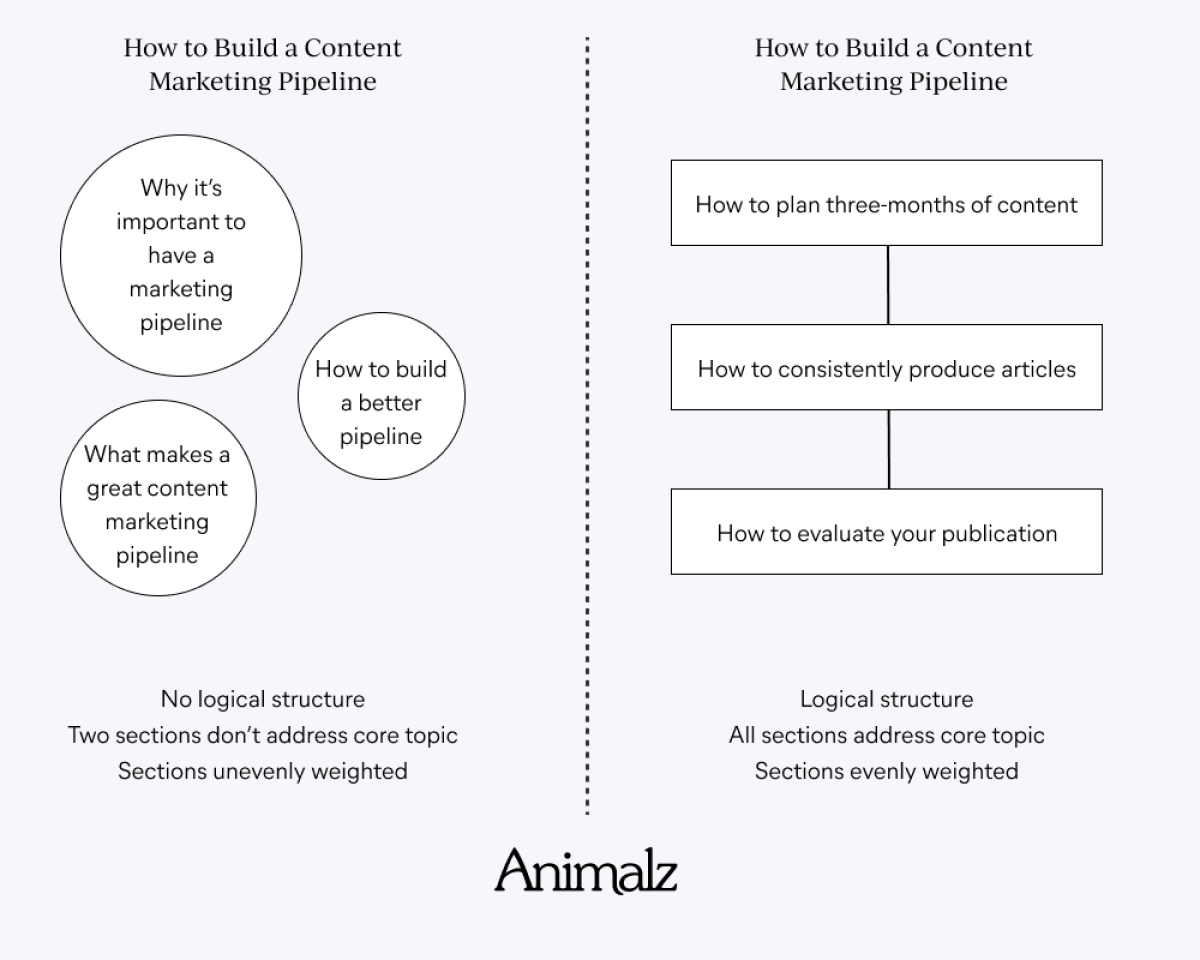Originally written by Ryan Law in 2020. Revised by Nathan Wahl in 2025.
MECE stands for Mutually Exclusive, Collectively Exhaustive. It's one of the core problem-solving frameworks in management consulting and a powerful method for better writing.
A lot of content fails to be MECE. Articles either repeat the same point in different sections or skip something obvious.
The MECE framework helps you structure content to prevent either failure — gaps in subject matter or redundancy.
The Basics of MECE
According to the MECE principle, within any set of data, information should be:
Mutually Exclusive (ME) – information is grouped into sets that don’t overlap with one another
Collectively Exhaustive (CE) – information is organized so that there are no obvious omissions or “gaps” in coverage
MECE tells you what to cover. It pairs well with other frameworks: the Pyramid Principle tells you what order to present it, and BLUF tells you how to open each section. But MECE comes first — without complete, non-overlapping coverage, sequencing and clarity won't save you.
Let’s say you’re preparing an employee onboarding guide, for example. If one section covers "setting up accounts" and another covers "configuring their email," your guide isn't mutually exclusive — email is an account, so you're covering the same ground. If the guide skips ordering equipment, it's not collectively exhaustive — a new hire can't start without a laptop.
The MECE framework was created by Barbara Minto at McKinsey & Company in the 1960s. Consulting firms like McKinsey, Bain, and BCG use MECE in case interviews. Candidates are asked to solve an intentionally broad challenge, like how to assess the viability of opening a new coffee shop.
Management consultants also use the MECE framework when creating visual decision maps, called “issue trees,” that break down a problem into its constituent parts.

For “opening a coffee shop,” one issue tree might branch out into cost (rent, equipment, staff, coffee beans) and revenue (pricing, likely footfall in a given location, number of sales).
How to Use MECE in Your Writing
In writing, one of the strongest places to deploy MECE is during the outline stage. Most article ideas come from a problem we want to solve or an opinion we want to voice. The first step is to break down the topic into its component parts, and ask, “What information is necessary to answer the article’s core question?”
1. Start with Your Article's Core Question
Every article you write answers a question, even if that question isn't explicitly stated. "How to Build a Content Marketing Pipeline" answers the question: What steps do I need to take to build a content marketing pipeline?
Write down your article's question. Then list every component needed to fully answer it — nothing more, nothing less.
2. Choose a Logical Structure
Once you know what components to cover, organize them in a way that makes sense for your topic.
For how-to content, use a process structure. The cleanest way to make how-to content MECE is to organize it chronologically. Think in terms of before, during, and after.
For How to Build a Content Marketing Pipeline:
Before you write: Plan three months of content
During writing: Produce articles consistently
After publishing: Evaluate and analyze performance
Each section covers a distinct phase. There's no overlap and no gaps. Your reader can follow the process from start to finish.

This structure works for any process-based topic. Writing about email marketing? Cover before you send (building your list), during the send (crafting campaigns), and after (analyzing results). Explaining AEO/SEO audits? Start with preparation, move to execution, end with implementation.
3. Scope Out the Length of Each Section
Estimate word count for each section. If sections are wildly uneven, that's often a sign one is too broad and covering more than is necessary, or too small to deserve its own section.
Rough word-count estimates at the outline stage help scope the final length of the article. MECE content should be only as long as the topic requires.
How to Build a Better Content Marketing Pipeline has three core sections, and each should carry similar weight. Allocating space evenly makes sense:
Introduction: ~100 words
Section 1 — How to plan three months of content: ~500 words
Section 2 — How to consistently produce articles: ~500 words
Section 3 — How to evaluate and analyze your publication: ~500 words
Conclusion: ~100 words
At the end of these steps, we know we have a piece in the 1,500–2,000 word range that comprehensively answers the question posed by the title.
Common MECE Mistakes in Content (And How to Fix Them)
Most MECE failures come down to two problems: sections that don't deliver on the title's promise (not CE), and sections that cover the same ground as each other (not ME). Both often stem from the same habit — outlining based on your research journey instead of what readers actually need.
Let's take the example topic How to Build a Content Marketing Pipeline.
Gaps: Sections That Skip the Core Topic (Not CE)
Here's a common outline structure:
Section 1 — Why it's important to have a content marketing pipeline
Section 2 — What makes a great content marketing pipeline
Section 3 — How to build a content marketing pipeline
Two out of three sections don't touch on the actual "how to." If we wrote this article, we'd end up with 2,000 words that skirt around the topic. The context-setting sections would be too long; the meaty "how to" portion would be too short. Exhausting to read, but not exhaustive coverage.
Overlap: Sections That Cover the Same Ground (Not ME)
Here's another flawed outline for the same topic:
Section 1 — How to plan your content pipeline
Section 2 — How to build your editorial calendar
Section 3 — How to measure content performance
Sections 1 and 2 overlap. Planning your content pipeline is building your editorial calendar — they're the same activity described two ways. A reader going through both would feel the repetition, even if the wording differs.
Consistently Persuasive Writing with the MECE Framework
Most writing on the web mirrors the thought process of its writer. While that isn’t a universally bad way to write, there’s normally a better framework for structuring any article or argument.
MECE is a valuable tool for creating thorough, persuasive structures in a consistent way. It forces you to organize information around what readers need, not how you discovered it. When your outline follows the MECE framework, your finished article earns trust and readers walk away feeling the topic was thoroughly addressed.
